Swamp Greenhood
Swamp GreenhoodPterostylis tenuissima | |
|---|---|
| Kingdom: | Plantae |
| Phylum: | Magnoliophyta (Angiosperm) |
| Class: | Magnoliopsida (Monocotyledon) |
| Subclass: | Liliidae |
| Order: | Orchidales |
| Family: | Orchidaceae |
| Status | |
| Australia: | Vulnerable (EPBC Act 1999) |
| Victoria: | Critically Endangered (DELWP 2020) |
| FFG: | not isted |
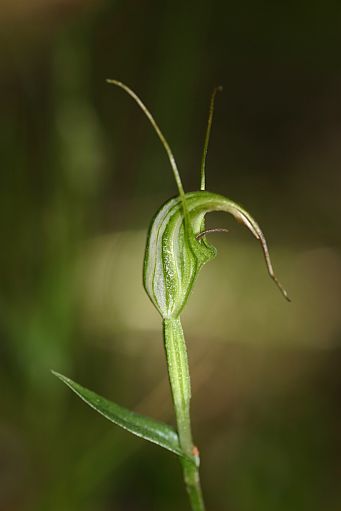
The Swamp Greenhood Pterostylis tenuissima has a single translucent white flower up to 20mm long, with dark green stripes and toning. Flower stems are green, grow to approximately 30cm tall and have up to six small stem sheathing leaves.
Distribution
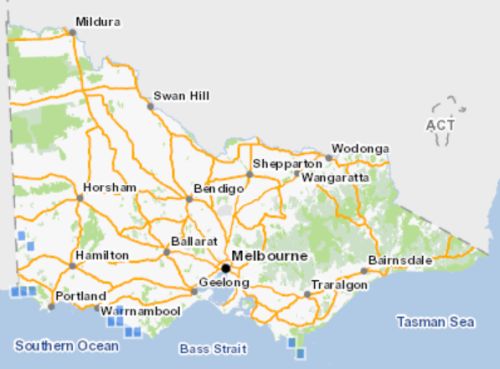
Ecology & Habitat
The Swamp Greenhood orchid is thought to be exclusively associated with Swamp Scrub vegetation, a dark, dense, wet habitat comprising predominantly Woolly Tea-tree and to a lesser extent Scented Paperbark that occurs in wet conditions with black alluvial soil such as soaks, swamps and along watercourses.
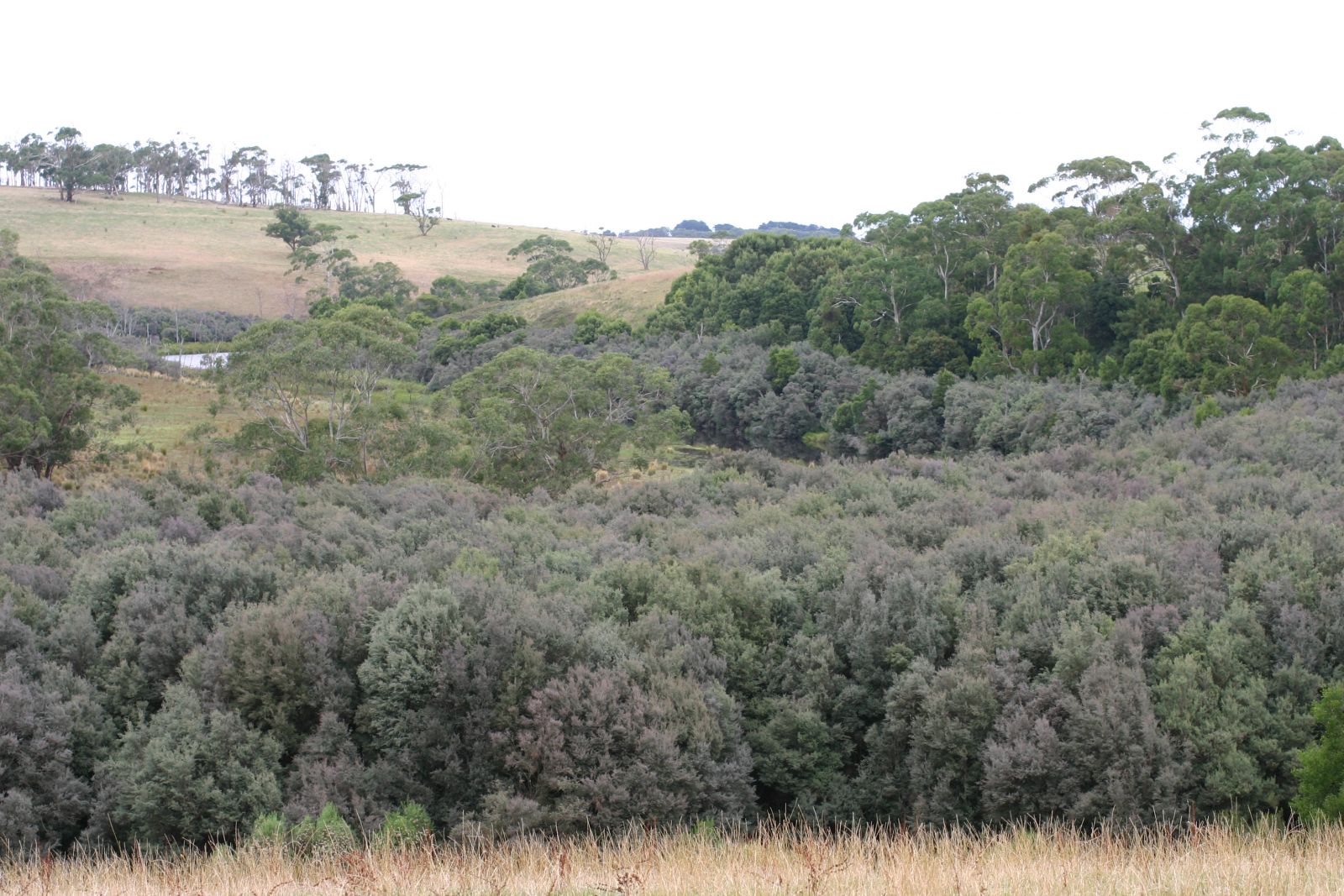
Swamp Greenhood grows in the open understorey beneath this dense canopy along with a huge diversity of grasses, sedges, herbs, moss and fungi. It is sometimes found on or beside animal tracks through the Swamp Scrub. Orchids are rarely found in the closed areas of understorey dominated by dense Gahnia (Saw Sedge).
Flowering occurs throughout the year and is more prolific during summer months. Most of the population occurs in South West Victoria with only one other site at Wilsons Promontory.
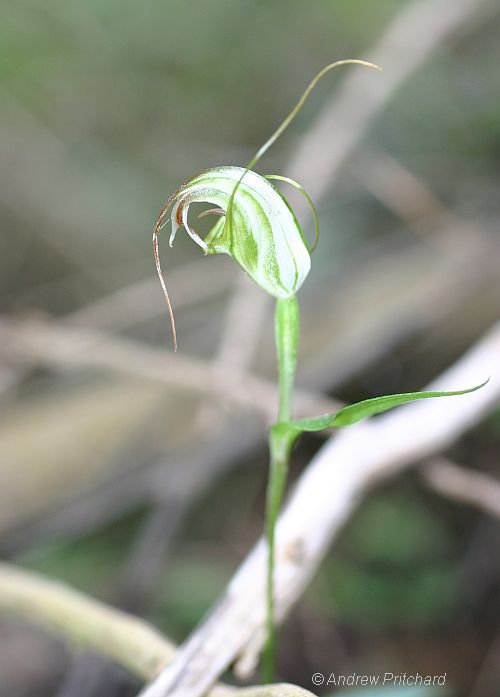
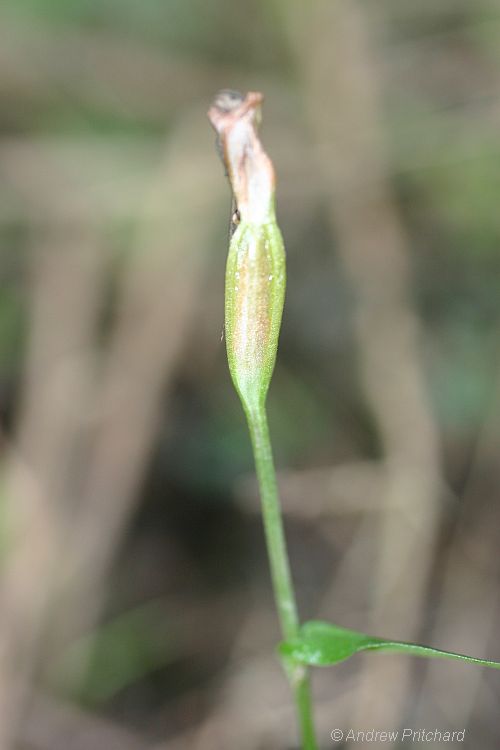
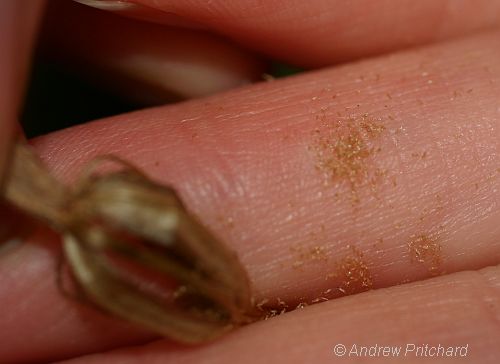
Threats
The remaining populations of Swamp Greenhood are closely dependent on the retention of Swamp Scrub vegetation, particularly in the Curdie Vale, Peterborough, Nelson and Tyrendarra areas.
Whilst some Swamp Scrub habitat is in parks and reserves there are significant areas in private ownership which require careful management. The main threats are related to the quality of the Swamp Scrub habitat. Clearing results in complete loss of habitat, over grazing tends to thin out vegetation allowing more light to enter, which alters microclimate conditions. Physical impacts from overgrazing include trampling of orchids, compaction and pugging of soil. Introduced weeds smother out the Swamp Greenhood and compete for germination space. Over grazing by rabbits and wallabies can reduce seed production.
Conservation & Management
The conservation status of Swamp Greenhood was re-assessed from Vulnerable in 2014 (DEPI 2014) to Critically Endangered in 2020 as part of the Conservation Status Assessment Project – Victoria (DELWP 2020).
The majority of Swamp Greenhooods grow on privately owned land. Farmers and other landholders play a major role in protecting this species. Many landholders have protected the Swamp Scrub habitat on their properties by limiting or excluding stock access and controlling weeds.
The highest priority is to focus on protection of habitat quality both on private property and within parks and reserves. This involves negotiating cooperative management agreements with private landholders and ensuring populations in parks and reserves are recognised and protected. At present there are twelve priority sites in Victoria (11 of these in the south-west and one site at Wilson’s Promontory).
Private landholders have played an important role in some areas where they have generously assist with research and monitoring by allowing surveys to be conducted on their land. Other actions include conducting surveys to locate suitable habitat areas and any additional populations, routine population monitoring at known sites and assessment of threats. A sample of seed from known sites is collected and stored to safeguard against catastrophic loss of a population.
Key activities
- Maintain successional vegetation structure/preventing shrubs/ larger plants growing on site - Maintain / improve quality of habitat of known populations.
- Routine population monitoring every 3 years.
- Assist with monitoring impacts of grazing by native and introduced animals.
- Survey of suitable habitat to find new populations.
- Control pest plants using herbicide application and / or hand removal.
- Prepare site specific management statements or adjust existing management plans for public land to protect orchid populations.
- Collect and store seed.
- Collect mycorrhizal fungus to assist ex-situ propagation
- Establish and facilitate regional Recovery Team.
- Other research - Increase understanding of 'Habitat critical for survival' for the Swamp Greenhood.
- Other research - Identify pollinator and its ecological requirements.
Key sites
- Brucknell private property - seed has been collected from this site and sent to the seed bank. Two new populkations were discovered in 2009. Landholders control pest plants using herbicide application and / or hand removal. Routine population monitoring carried out by DELWP every three years.
- Curdie Vale private property - Swamp Scrub Recovey Project engaged landholders in education and management activities. Many landholders have fenced off Swamp Scrub containing Pterostylis tenuissima to better manage stock access or undertook weed control and several participated in searches and flora surveys of the area. Routine population monitoring carried out by DELWP every three years.
- Wilsons Promontory - Parks Victoria undertakes search and population monitoring near Darby River
- Long Swamp - Discovery Bay Coastal Park, the area was strategically surveyed in 2010, 13 previously unrecorded sites consisting of thousands of plants were discovered, mapped and assessed during this activity. Routine population monitoring, including grazing impacts planned every year.
- Nelson, Private Land
- Noble Rocks, Long Swamp, Discovery Bay Coastal Park - Routine population monitoring by DELWP/Parks Victoria every 3 years.
- O'Briens Creek - private
- Peterborough private property
- Princetown private property
- Ralph Illidge Sanctuary - Swamp Greenhood orchids have not been seen at this site for several years.
- Latrobe Creek Reserve
- Spring Creek private property
- Timboon-Curdievale Road private property
- Tyrendarra, Private Land - Manage environmental weeds.
More Information & references
Royal Botanic Gardens - Orchid Conservation Program
DELWP (2020) Provisional re-assessments of taxa as part of the Conservation Status Assessment Project – Victoria 2020, Department of Environment Land Water and Planning, Victoria. Conservation Status Assessment Project – Victoria
DEPI (2014) Advisory List of Rare or Threatened Plants in Victoria - 2014 Department of Environment and Primary Industries, Victoria.

